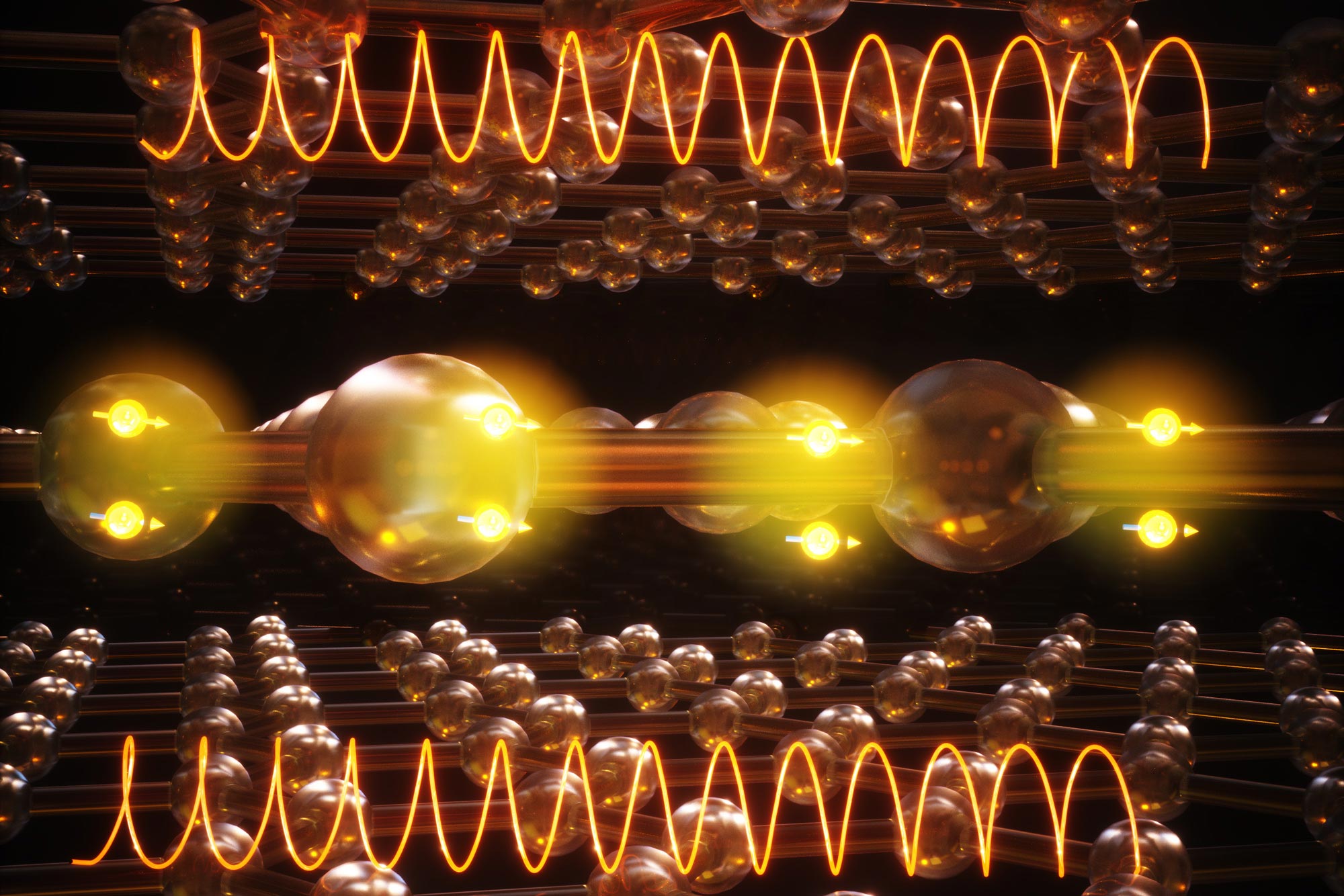
In a study appearing in Nature, the researchers report that the material exhibits superconductivity at surprisingly high magnetic fields of up to 10 Tesla, which is three times higher than what the material is predicted to endure if it were a conventional superconductor.
The results strongly imply that magic-angle trilayer graphene, which was initially discovered by the same group, is a very rare type of superconductor, known as a “spin-triplet,” that is impervious to high magnetic fields.If they could be built with spin-triplet superconductors, MRI could operate under higher magnetic fields to produce sharper, deeper images of the human body.
The new evidence of spin-triplet superconductivity in trilayer graphene could also help scientists design stronger superconductors for practical quantum computing.In this way, and through mechanisms, high magnetic fields can derail superconductivity in conventional spin-singlet superconductors.
These materials superconduct through pairs of electrons with the same spin — a property known as “spin-triplet.” When exposed to high magnetic fields, the energy of both electrons in a Cooper pair shift in the same direction, in a way that they are not pulled apart but continue superconducting unperturbed, regardless of the magnetic field strength.
Jarillo-Herrero’s group was curious whether magic-angle trilayer graphene might harbor signs of this more unusual spin-triplet superconductivity.They soon followed up with tests of trilayer graphene, a sandwich configuration of three graphene sheets that turned out to be even stronger than its bilayer counterpart, retaining superconductivity at higher temperatures.
When the researchers applied a modest magnetic field, they noticed that trilayer graphene was able to superconduct at field strengths that would destroy superconductivity in bilayer graphene.
In their new study, the physicists tested trilayer graphene’s superconductivity under increasingly higher magnetic fields.As they increased the magnetic field around trilayer graphene, they observed that superconductivity held strong up to a point before disappearing, but then curiously reappeared at higher field strengths — a comeback that is highly unusual and not known to occur in conventional spin-singlet superconductors.This is about three times higher than what the superconductor should withstand if it were a conventional spin-singlet, according to Pauli’s limit, a theory that predicts the maximum magnetic field at which a material can retain superconductivity.
Trilayer graphene’s reappearance of superconductivity, paired with its persistence at higher magnetic fields than predicted, rules out the possibility that the material is a run-of-the-mill superconductor.Instead, it is likely a very rare type, possibly a spin-triplet, hosting Cooper pairs that speed through the material, impervious to high magnetic fields.
About 20 years ago, theorists proposed a type of topological superconductivity that, if realized in any material, could [enable] a quantum computer where states responsible for computation are very robust.
But even if it’s not, this could make it easier to put trilayer graphene with other materials to engineer that kind of superconductivity.